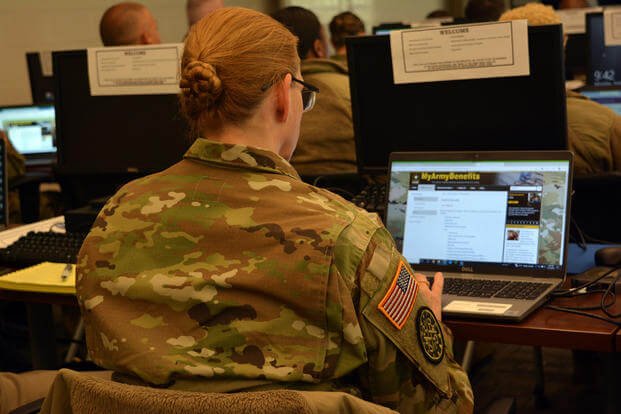The deadline to enroll in the military's Survivor Benefit Plan during this year's open season has just shortened -- dramatically.
Congress authorized the open season for military veterans to buy into or opt out of the Survivor Benefit Plan to run through Dec. 31. But the Defense Finance and Accounting Service, or DFAS, announced in late September that it wants potential enrollees to start the process by Nov. 1.
"Retirees who want an individual estimate prior to officially enrolling should submit their Letter of Intent (LOI) no later than Nov. 1, 2023," according to the DFAS website. "If we do not receive the LOI by Nov. 1, we may not be able to provide an individual estimate in time for you to enroll by the deadline. We strongly recommend you upload your LOI via our askDFAS online upload tool."
That's less than a month away, folks.
What Is the Survivor Benefit Plan?
Military retirement pay ends with the death of the military retiree. For eligible surviving spouses and children to receive any continuation of that annuity, they must enroll in the Survivor Benefit Plan, or SBP.
While there are a lot of nuances and details, SBP offers a continuation of the military retirement pay annuity. It sends monthly payments to eligible beneficiaries. The amount of the payment depends on the SBP enrollment level and the amount of the gross military retirement pay. Depending on the beneficiary category, SBP benefits may continue for their entire life.
Importantly, SBP benefits receive the same annual cost-of-living allowance (COLA) adjustment as other federal benefits, providing important protection against inflation.
What Is Open Season?
Typically, the decision whether to enroll in SBP is made at the time of military retirement. There are limited options to enroll or disenroll, based on qualifying life events such as the birth of a child or a marriage.
For this open season, almost all military retirees may revisit their SBP decision. While they cannot change their level of coverage or beneficiary groups, they can get out of SBP or enroll in the plan without needing to meet a qualifying life event.
What Does This Mean for You?
If you are a military retiree, or the spouse of a military retiree, you should revisit your SBP decision. Look at your entire financial situation and how it would change with the loss of military income.
When planning for survivors, consider the following questions: What streams of income would be available to them? How long will they last? Do they have inflation protection? What debts and expenses will survivors have?
What assets will be available to survivors? These may include investments or life insurance proceeds. What is the plan to turn those assets into lifetime income? Will the survivors be equipped to implement that plan, even when grieving? What risks does the plan have? Think about market risk, sequence of returns risk, inflation risk, longevity risk, credit risk, liability risk, and over- or underspending.
Then, be sure you actually understand the facts about the SBP program. There are a lot of myths and misconceptions out there.
With this information, consider whether SBP makes sense for you now. If you're overwhelmed or not sure, consider quickly meeting with a fee-only financial planner who can help you analyze your options. Just be aware that many "advisers" will erroneously point you away from SBP, typically because they make money off whatever other choices you make.
Disenrolling in SBP
If you are currently enrolled in SBP and determine that your survivors would have adequate income without SBP benefits, disenrollment is easy. Use the form and submit it to the appropriate authority. You should be disenrolled the following month.
Enrolling in SBP
If a review of your family's survivor income plan shows a deficit, you should get more information about the costs and benefits of enrolling in SBP. The first step is to submit a Letter of Intent to DFAS before Nov. 1. This is a nonbinding inquiry to get more specific information for your situation.
DFAS will calculate your buy-in amount, monthly premiums and projected benefits.
After reviewing the calculations, you can decide whether you want to proceed.
If you do, you must submit a signed SBP Open Season 2023 enrollment form to DFAS. On it, you indicate your enrollment options, including how you will pay the buy-in amount. Options include paying at once or having the amount deducted over the next 12 months of military retirement pay. Keep in mind that for older retirees, the buy-in amount may be significant and exceed 12 months of military retirement pay. This is an important consideration.
Retirement pay makes up a significant portion of most military retiree's family budgets. Many survivors would struggle financially without any portion of that income. Because of the inflation protection provided by COLA and the potential lifetime payments, SBP can be an important part of the plan for survivor income.
Take advantage of this unique opportunity to revisit your SBP decision. And do it quickly!












